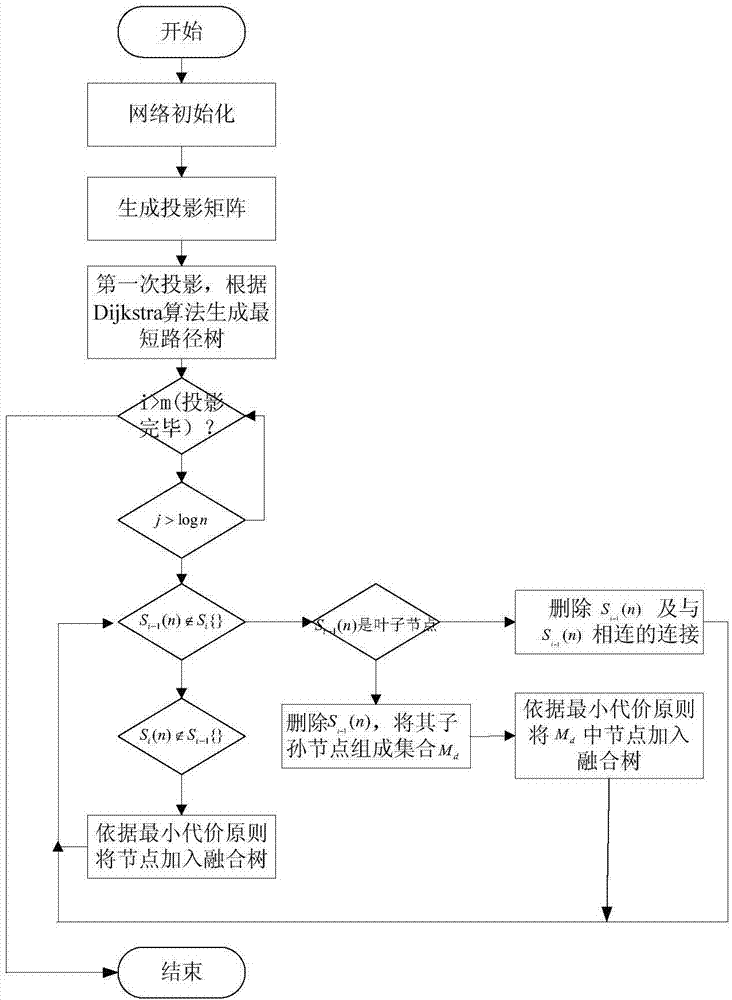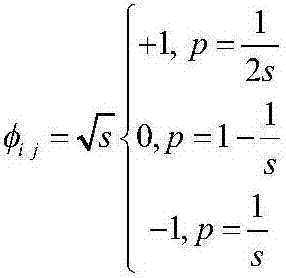Wireless sensor network dynamic data fusion tree method based on compressed sensing
A wireless sensor and compressed sensing technology, applied in network planning, network topology, wireless communication, etc., can solve the problems of high computational complexity and high network energy consumption, achieve low computational complexity, reduce network energy consumption, and reduce network data The effect of transfer volume
- Summary
- Abstract
- Description
- Claims
- Application Information
AI Technical Summary
Problems solved by technology
Method used
Image
Examples
Embodiment Construction
[0035] The preferred embodiments of the present invention will be described in detail below with reference to the accompanying drawings.
[0036] figure 2 It is a flowchart of the method of the present invention, as shown in the figure, the wireless sensor network dynamic data fusion tree method based on compressed sensing provided by the present invention includes:
[0037] Step 1: Initialization: Set up node set S i ←{}, path tree set T i ←{};
[0038] Step 2: One-dimensionalize the nodes in the network to Node{N(1),N(2),...,N(n)};
[0039] Step 3: Obtain a sparse random projection matrix according to the following formula:
[0040]
[0041] where Φ i,j is the projection coefficient of the i-th row j column, the parameter s determines the sparsity of the projection matrix, and p is the probability; when s=n / (lgn), the reconstruction accuracy of O(klgn) projections is equivalent to the maximum K coefficient algorithm ;
[0042] Vector φ i The node corresponding to...
PUM
 Login to View More
Login to View More Abstract
Description
Claims
Application Information
 Login to View More
Login to View More - R&D
- Intellectual Property
- Life Sciences
- Materials
- Tech Scout
- Unparalleled Data Quality
- Higher Quality Content
- 60% Fewer Hallucinations
Browse by: Latest US Patents, China's latest patents, Technical Efficacy Thesaurus, Application Domain, Technology Topic, Popular Technical Reports.
© 2025 PatSnap. All rights reserved.Legal|Privacy policy|Modern Slavery Act Transparency Statement|Sitemap|About US| Contact US: help@patsnap.com



